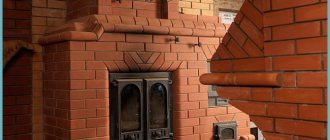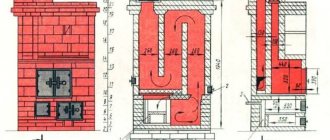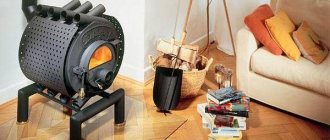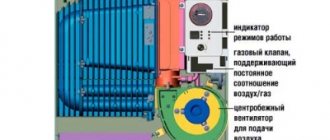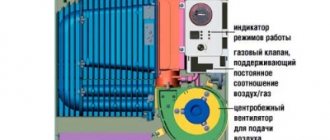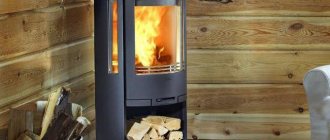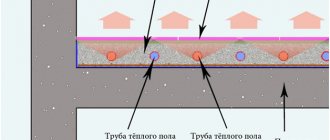Stove heating in a wooden house can be found quite often today, despite the fact that many are switching to liquid fuel (gas). Solid fuel fireplaces that burn wood are capable of producing fairly high-quality heating. With the correct layout and do-it-yourself installation, such a unit is capable of heating two rooms at once, and the stove itself can be either brick, cast iron or steel. Devices equipped with a water circuit are also ideal for installation in a village house, a two-story cottage assembled from sip panels.
Types of furnaces
In our country, many types of furnace equipment are built and operated; we list some:
- Swede
- Dutch
- Baby
- Heating and cooking
- Fireplace
- Stove with fireplace.
Types of stoves
Despite the difference in design, all stoves are characterized by the following parameters:
- Purpose.
- Maximum oven heating temperature.
- Duration of fuel combustion.
- The time required for the structure to warm up and begin full heat transfer.
- Smoke exhaust device.
- Scheme of the movement of warm gases through channels arranged in the furnace body.
- Oven shape.
- Options for finishing external walls.
- Material used in the construction of the furnace.
Stoves installed in homes have ancient traditions. Our distant ancestors cooked food on it, heated their homes with it, and used it as a sleeping place.
Safety
Equipment used for heating a wooden structure must be safe to use.
To comply with fire safety standards, fireplace stoves are equipped with heat-resistant glass; open stoves are unacceptable.
Do not ignore safety rules when installing heating structures.
Russian brick stove
The Russian brick stove has the following specific advantages:
- maintaining heat in the home due to long cooling;
- the ability to maintain heat in a room of any size;
- fire resistance.
Meanwhile, these devices also have a set of certain disadvantages:
- To build a furnace, you must have certain skills and knowledge, which is why it is advisable to invite specialists to construct it.
- To build a furnace, it is necessary to first build a separate, buried foundation.
- The oven is quite large in size and can take up quite a lot of space.
- This circumstance must be taken into account when determining the location where the stove will be installed.
Russian brick stove
For the manufacture of stoves, two materials are used - metal and brick (plain red, and fireproof, also called fireclay).
A stove for a house made of wood, for the manufacture of which I use steel or cast iron, the thickness of which is from 3 to 5 mm.
The wall of this design consists of two layers of metal. There is an air gap between them. This layer is designed to protect the room from so-called thermal shock.
Metal oven
Metal stoves have the following advantages:
The homeowner has the opportunity to purchase a finished stove, which includes a chimney, equipped with a temperature control system.
Advantages of a metal stove:
- Furnaces made of metal can have an interesting appearance.
- Fast heating, which allows you to warm up the air in the room to the specified parameters in an extremely short time.
- High thermal output.
- Long service life.
- To perform its functions, the stove can use any existing fuel.
Metal stove
But stoves made of metal also have some disadvantages, among them the following:
They are not suitable for use in large areas due to high fuel consumption.
Fast heating means fast cooling.
Metal stoves are classified as fire hazardous objects and the operation of the stove must be constantly supervised, and a fire extinguisher and other fire extinguishing means must be within reach.
If low-quality metal was used to make the stove, then after the first heating it may become deformed.
Design
A 6x6 building is most likely a country house, in which it is possible to live not all year round, but only in the warm season. Therefore, its layout is simple due to its small footprint. Its drawing is also simple due to the lack of a heating system. And for year-round use, more spacious buildings are built, for example, an 8x8 cottage or larger. But then stove heating is simply necessary.
However, a construction company can offer a project for a budget 6x6 house with a heating system. It will include a general drawing of the house and a detailed construction plan. The customer who wishes to have a house with a stove can make his own amendments, which will be immediately taken into account by the contractor. This option is called custom construction.
The client can order from the company not only a finished project, but also the construction of a standard house with already resolved planning issues.
Option for internal layout and location of the stove in the house
If the customer fully accepts the proposed plan, then construction will cost him much less.
Construction of a classic fireplace
Fireplaces installed in modern homes have combined all the best from those that were used in the Middle Ages and Russian stoves, which release heat into the home with high efficiency.
Fireplaces can be used not only as a source of heat, they can decorate the interior of the room where it is installed.
Construction of a classic fireplace
Fireplaces installed in modern homes have the following number of properties:
Cain can be installed directly into the wall, and those that are installed next to the wall. There is another way to install it in the form of an island.
Fuel port type. Fireplaces can be open or closed. The first option is a classic design with an open firebox; in the second version, this hole is closed with doors.
The type of fuel used is coal, gas, electricity.
The design of the fireplace directly affects the efficiency. Thus, the efficiency of an open fireplace is 15%, the closed type shows an efficiency of 70 - 80%. A closed fireplace can act as the only source of heat in the house.
Every homeowner can build such a structure in his home; this requires certain knowledge, a set of tools and the ability to work with them.
Some details need to be paid special attention:
- design and construction of the base (foundation), the larger the size of the fireplace, the larger the base should be;
- chimney design;
- volume of construction and finishing materials
- appearance of the structure as a whole;
- fire safety, fire safety measures must be provided at the design stage;
- Tools that will be necessary when performing construction work.
- trowel for working with mortar;
- hammer-pick for cutting bricks;
- jointing used to seal the seam;
- building level and plumb line, square;
- container for preparing a solution and soaking clay.
Finishing materials for the kitchen with stove
To transform the kitchen walls, you can paint them with light paint. Gluing washable wallpaper is also becoming popular.
The choice of wallpaper pattern depends on the overall design idea of the kitchen space.
The best option would be to use vinyl wallpaper. Not only can they be washed, but they also do not fade over time. Moreover, such wallpaper does not absorb any odors.
Note! In addition, you can use decorative plaster. One of the advantages of such plaster is its unique patterns. The plaster composition is applied to the wall and various designs are created.
In addition, plastic panels can be a popular finishing material. They are moisture resistant and durable. They do not require special care or installation.
Ceiling finishing
As for the ceiling, you can paint it with water-based paint. You can also cover it with ceiling tiles. Tile patterns come in a wide variety, ranging from simple to complex. You can hang a small chandelier or hanging lamps in the middle. Now this is becoming relevant. Everyone can choose at their own discretion.
Beams on the ceiling add a special effect and are great for a rustic style.
Wall decoration
The walls can be painted any color. The use of drawings made by artists is becoming popular.
Floral patterns on the walls of a rustic kitchen fit harmoniously into a rural interior.
Often photo wallpapers are used, which are easy to glue and at the same time they require special care. They will decorate any interior of an apartment or house.
The white color of the walls will fill the kitchen with airiness and create a feeling of large space.
The walls can also be decorated with plaster.
An unusual option is plaster and stone for walls in a country house.
Its advantage is that it can be applied to any type of material. Uneven surfaces and cracks can be repaired. At the same time, it is considered durable and not subject to temperature changes. Each finish has its advantages. Choose what is closest to you!
Where is the best place to put a stove in a wooden house?
As a rule, the location for installing the stove must be determined at the design stage of the house. This is necessary in order to ensure efficient heating of the house and make it as safe as possible. What criteria should a homeowner be guided by when planning where to install a future furnace?
Where is the best place to put a stove in a wooden house?
The heat source can be installed in rooms whose area is at least 16 sq.m. the installation must be carried out in such a way that there are no floor beams under the stove intended for installing floors. And at the place where the chimney exits there should be no ceiling beams or rafters.
To reduce the size of the chimney pipe, it makes sense to locate it in the center of the house. In this case, the chimney will exit onto the roof near the ridge of the roof. Construction of a stove in close proximity to the wall is impractical, since a significant part of the heat will be directed to heating the street. In addition, placing the stove near wall structures increases the fire hazard. Based on the above, we can conclude that placing the stove in the center of the room would be optimal.
A wood-burning stove will be at its most efficient if heat is transferred from all its surfaces. This design can easily cope with heating one or several adjacent rooms. This can be taken into account when placing rooms at the planning stage.
To provide heat to adjacent rooms, the stove is installed between rooms in a partition. In order to keep it warm in a four-room house, it is best to install it at the junction of the partitions so that one of the walls of the stove opens into the room. With this arrangement, it is possible to organize the exit of the firebox to the kitchen.
The main advantages of stove heating
Installing a stove is not only a simple process, but also quite inexpensive in terms of the cost of materials. Using firewood is the most environmentally friendly way to heat a space and will not harm your family. The installation of a stove can be combined with the installation of a fireplace, then there will be not only a standard type of heating, but also a stylish design element in the room.
Furnace maintenance is a simple and fairly cheap process. The main advantage is the ability to regulate the degree of combustion and the ability to retain heat using special dampers installed in the stove.
Foundation for the stove
If you want to build a fireplace in your home, then first of all you need to think about arranging a foundation for it. A properly executed foundation will ensure its long-term and safe operation. In case of negligence or mistakes made, it will undoubtedly lead to deformations, subsidence of the fireplace, and the appearance of cracks.
The main requirements for the foundation can be defined as follows: reliability and lack of connection with the foundation of the entire building.
The optimal solution would be to build a capital foundation, and it can be built simultaneously with the construction of the foundation for the main building. At the same time, creating a single foundation is unacceptable. The thing is that each foundation is designed for a certain load and as a result they have different shrinkage.
There must be a gap of at least 50 mm between them; it must be filled with sand or other bulk material and compacted thoroughly.
The dimensions of the foundation in plan should be larger than the size of the base of the fireplace. That is, it should protrude from the fireplace by 100 - 150 mm. The depth of occurrence depends entirely on the properties of the soil. Practice shows that for a one-story house it is enough to deepen the fireplace foundation by 0.5 - 0.6 m; if the house is higher, then the depth should accordingly be greater - up to 1 m.
Technical features
Like any construction, the construction of a furnace begins with the construction of a foundation. You need to know a number of features that will help you avoid mistakes.
Stove maker from St. Petersburg:
– There are no light brick kilns. Even a low 630x630 mm 1/4 brick with lining will weigh about 700-800 kg.
Even such a relatively “light” device cannot be installed on every floor.
Installation of stoves, fireplaces and chimneys weighing over 750 kg must be carried out on a separate foundation.
According to Alexey Telegin, the foundation should provide:
1. Uniform distribution of load on the ground in accordance with the bearing capacity of the soil;
2. Stability and protection of building and furnace structures from external influences during house movements, shrinkage and soil heaving.
Any foundation (its depth, dimensions and reinforcement) is calculated based on the load acting on it, as well as the bearing capacity of the soil.
The load on the furnace foundation (given its large mass) is very different from the load acting on the main foundation. If you build the foundation in one piece, it turns out that at the site where the furnace is erected, the loads are added up, which can lead to undesirable consequences.
For buildings subject to shrinkage and movement, it is necessary to build a separate foundation for the stove, not connected to the foundation of the house.
MasterOk:
– The foundations are made independent, and if two foundations are adjacent to each other, a soft insert is installed between them.
The simplest soft insert between two foundations can be made of a foam plastic board 5 cm thick.
This will protect the foundation from any lateral loads and the destructive properties of frost heaving of the soil. It’s not without reason that they say that a separate foundation for a stove is folk wisdom.
If a single foundation is laid, the uneven load must be taken into account in the calculation. And in order to compensate for it, additional reinforcement is laid in the “body” of the foundation, in the place where the furnace is planned to be installed.
Water heating circuit
To get rid of one of the main disadvantages of a conventional stove - uneven heating of rooms, you need to:
1. Install a heat exchanger (register) filled with water into the oven;
2. Connect a circulation pump to the system, which will circulate heated water through the heating system - radiators or heated floors.
This system operates on the principle of a solid fuel boiler and a closed heating system.
In this case, the stone stove is multifunctional: it simultaneously performs the function of water and stove heating, which ensures uniform distribution of heat throughout the rooms.
Vadim Kornev:
– It is better to place a stove with a water circuit against one of the walls of the house to facilitate the wiring of batteries. The presence of a circulation pump, as well as an expansion tank, is required. Such devices are quite safe if the heating element is professionally welded and there is always water in the circuit.
Interesting is the practical experience of building heating for a country house based on a stone stove with a water circuit by a specialist from our portal Vasily Katriychuk :
– I installed a water tank in my stove. The total capacity of the system including the pipes to the riser was 65 liters. When it is heated, the water in the tank is simultaneously heated, after which, with the help of a circulation pump, the coolant is driven into the heated floors and radiators of the heating system.
When installing such a heating system, it is necessary to provide all safety measures. In the event of a power outage, the circulation pump will stop working, but the stove will still continue to heat the water (it cannot be turned off instantly). As a result, the water may boil and the pipes will burst. To prevent this from happening, a security group is installed in the system. And if the coolant boils, excess water is discharged.
The operating pressure in the heating system ranges from 0.6 to 2 atmospheres. The safety group will operate at a pressure of 3 atmospheres.
Vasily Katriychuk:
– In case of a power outage, you can provide a backup electricity supply system - an individual inverter or a gas generator.
In addition to providing the home with heat, a water-contour furnace prepares hot water for the domestic hot water system. And in order not to heat the stove in the summer, you can additionally install an electric boiler for the hot water system.
Let's figure out whether the house becomes dirty from a working stove and how much one stack of firewood is enough.
Vasily Katriychuk:
– I lay firewood twice – in the afternoon and in the evening. Thanks to the large firebox, I can even put logs in my wood stove. This extends the burning time on one tab. And since the heating stove is built according to all the rules, it is very economical, does not smoke, and the ash must be removed once every three days.
The register can be installed in the oven in two ways:
1. Install the heat exchanger into the already folded stove. This is expensive and you will have to partially disassemble the device. Also, the volume of coolant in the register will limit the size of the furnace;
2. Design and build the furnace under a carefully calculated heat exchanger. This method will allow you to achieve the ideal combination of oven and register, which will ensure their efficient operation.
Vasily Katriychuk:
– In my case, the water tank is installed in the firebox through removable doors.
To remove the tank at any time (for repair or maintenance), a gap of 3-4 mm is left between the walls of the heat exchanger and the walls of the furnace.
The gap is also necessary to compensate for the thermal expansion of the steel heat exchanger.
Channel and ductless furnaces
Channel and ductless furnaces
The peculiarity of channel furnaces is that their design includes channels made in horizontal and vertical planes. Heat moves through them, which in direct-flow structures simply goes up. It should be understood that the movement of heat through the channels may be difficult. Therefore, the design of the furnace provides for the presence of elbows. To prevent stagnation of warm air, certain devices are installed that regulate combustion modes. There is a summer mode, during which the stove warms up and after that you can switch to full heating.
How to properly heat the second floor
Supplying heat to the second floor of a house is a rather difficult task. As an option, you can consider installing a fireplace equipped with additional equipment. The fireplace has a number of advantages. Among them are the following:
- ease of operation;
- small sizes;
- use of almost any fuel.
How to properly heat the second floor
In fairness, it should be noted that most of our people consider it a luxury item, but this design is capable of combining democracy, aesthetic properties, and excellent performance of its main task - heating the room.
Heat supply to the second floor due to air convection. That is, passing by a heated fireplace wall, the air receives thermal energy and continues to move upward through a special box. Warm air is supplied to rooms located on the second floor through air ducts, which must be covered with thermal insulation. This is necessary to minimize heat losses and ensure fire safety.
Equipment characteristics
Recently, thanks to the variety of designs, potbelly stoves can complement the overall style of the interior of the room. Thus, this is not only a heating device, but also a kind of decoration for the room. The stove runs on wood no longer than 25 cm or other solid fuel, it all depends on the preferences of the owners and their financial capabilities.
The main functions of a potbelly stove installed in a country house:
- Heating.
- Possibility of cooking.
- Interior decoration.
Increasingly, a stylish potbelly stove is becoming a serious competitor for fireplaces, because, in addition to other positive qualities, the device is compact. It is easy to connect and, if necessary, move it to a new location or place it outside to fry meat in the fresh air.
A modern potbelly stove not only heats the room, but also decorates the room
If you need to frequently transport the stove from one place to another, then it is better to give preference to collapsible models. As a rule, they have an easily removable top cover, which often serves as a hob. This potbelly stove also features detachable legs and a multi-section chimney. The stove does not take up much free space, is a mobile piece of furniture and is easy to transport. Using a potbelly stove completely eliminates the risk of carbon monoxide poisoning, because it leaves the room through a pipe. It turns out that the safety of the device and the power of operation depend on the installation of the pipe.
Collapsible model of a potbelly stove
Self-installation of a Russian stove
To build a classic Russian stove, you will need about 1,650 bricks, a valve with dimensions of 260 by 240 mm and a certain volume of clay and sand, which is enough for 80 buckets of mortar.
Self-installation of a Russian stove
To carry out the work, it is necessary to use red bricks; fire-resistant (fireclay) bricks are used to lay out the firebox. When doing masonry, you must remember that the seams that are formed during masonry should be small. no more than 5 - 7 millimeters.
Each level must be laid using a building level and a plumb line. This determines how well the oven will be installed as a whole.
The construction of the stove must be carried out in accordance with the requirements of the order. This is the name of the diagram, which indicates the placement of bricks in each individual row. Such orders exist for almost all types of Russian stoves.
It should be noted that laying a stove is a rather complex construction process and requires a highly qualified mason. It’s not for nothing that there is a separate specialty for stove makers. And to build a stove at home, it is better to invite just such a specialist.
